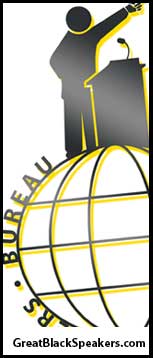Wednesday, August 13, 2008
Your Black Beauty: How To Wrap Your Hair

Wrapping the hair is a concept well known to many Black women, but some people either have never tried wrapping their hair, or just don't know if they're doing it correctly. Here's a quick how to from BlackHairMedia.com:
Sleek Wrap
A wrap set is a great way to get a sleek look! You will need a comb, setting lotion and hair clips (these are optional depending upon how long your hair is) and/or some paper wrap strips.
Step 1: Shampoo and condition your hair and apply setting lotion
Step 2: Use your comb and comb/wrap your hair around in a beehive or
circle, blending the hair together all around your head
Step 3: Secure where you hair joins with hair clips, or you can place a
wrap strip around your head to secure your hair in place
Step 4: Dry your hair under a hooded dryer, remove clips or wrap strip and
comb and style
Dry Wrap or Roller Wrap Set
To do the roller wrap set, also know as the doobie, you will need to roller set your hair, dry it under a hooded dryer, take the rollers out, then comb/brush your hair around in a wrap). Leave it wrapped for a while and when you comb it down, you will have big loose wavy curls with lots of body.
(Here's a video on how to do it)
Tuesday, July 15, 2008
Get Rid of Annoying Razor Bumps!

The problem with shaving or waxing is getting those painful razor bumps and ingrown hairs in areas that are hard to deal with.
Under the armpits and bikini areas are especially embarrassing in the Summertime!
Fortunately I came across a product called "Tend Skin" at Sephora (you can find it online or at the stores) that deals with those horrible bumps.
They come in 4oz and 8oz bottles for $20 or $35. There are many other razor bump remedy creams and gels, but this is one product that I know works. If you have any others, leave a comment telling where you got it from, how much, and how it worked!
FEATURED PRODUCT:

Tend Skin
"The solution for any cosmetic problem related to hair removal. Men can use it on their face, neck and back of the head while women find it useful on legs, bikini line, underarms and anywhere else hair removal causes razor bumps. Use in conjunction with shaving, waxing electrolysis or epilating. Caution: If you have an allergy to Aspirin (hives, itching) do not use this product."
(As found on Sephora.com)
The 411 on Eyebrow Threading

Eyebrow threading is a preferred hair removal technique for a number of reasons. Unlike tweezing or plucking, eyebrow threading removes one clean line of hair all at once, making it much quicker and easier to shape the brows. Eyebrow threading also will not harm the skin like wax and some creams can. If done correctly, the skin should not be red or irritated for more than a few minutes after the eyebrow threading session.
In addition to the luxury of little pain and precise work, eyebrow threading can be done for the same price (and in some places lower) than the cost of eyebrow waxing. Ask around your town nail salons and spas to see if they thread.
Here's a video about Eyebrow Threading, as featured on NBC News 10.
Monday, July 14, 2008
Black Beauty: Make Up Tips for Black Women from CareFair.com
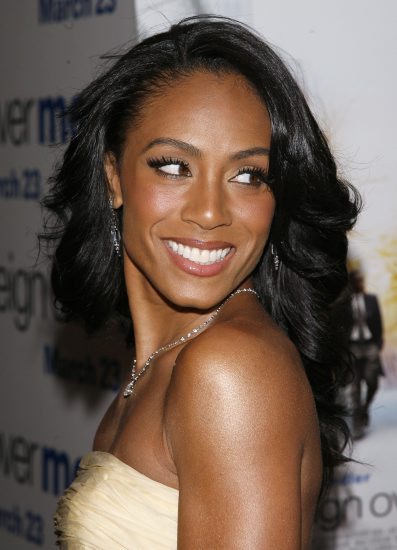
"African-American women have a wide variety of skin tones – from lighter to darker and everything in between. And while makeup lines have improved vastly in the last five years, it’s still a tricky undertaking to find the right shade for your skin tone. So finding the right makeup for your personal skin tone can be a tricky thing. If you choose the wrong color family, you can find yourself with a flat complexion or an ashen look. With a little guidance and some trial and error, you can find a color combination that works for you.
Here are three simple steps to help you on your way:
1. Pay attention to your undertones. Look beyond your skin’s color (overtone) to find the undertones that give definition to your features. For instance, rich ebony complexions often have cool undertones (look for colors in the blue family). Brown and caramel complexions may have warmer undertones (look for golden colors). Once you determine which colors are yours, use them as accents – especially around your eyes.
2. Find your color family – not just what you think is your color family. You might be surprised at just how off many women are when it comes to an accurate assessment of the colors that work for them. You may need to enlist the aid of a makeup specialist or your local cosmetics counter. In fact, you should consult a second opinion. And remember that foundation can look very different on your face than in the bottle or on that thumbnail palette, so be sure to test it on your jawline or on the inside of your wrist to see if it will work for you.
Tip: If your complexion is uneven, you may need two different colors of foundation that can be used together. When spread correctly over the right areas, a two-color approach can give you the even skin tone you’re looking for.
3. Use blush to contour your cheekbones. Here is one area where less is definitely more – especially if you use a more exotic color. A simple brush of currant or mauve can really set off and flatter a medium to dark complexion, while a sweep of caramel, honey or apricot can give definition to a medium to light complexion.
Tip: Bronzer can be used as an effective alternative to blush if you have a warmer complexion. Try dusting a light coating over your face, concentrating contoured strokes at your temples and cheekbones.
Something to Think About:
When selecting a makeup, color should not be your only concern. Remember your skin type. If you have normal to oily skin, a water-based liquid foundation and a cream blush may work best for you. On the other hand, normal to dry skin can benefit form an entire line of cream formulas."
Wednesday, July 9, 2008
New Method Of Hair Weaving: Flexi-Strand

Weaves and wigs are now about as common as MacDonald's cheeseburgers. White, Black, Asian and Hispanic women alike can revamp their do's with adding weave.
The well known methods for applying weave are:
Hair Clips- simple and quick way to attach weave by a clip (can easily fall out, not for long term)
Hair Bonding- using hair glue (which I absolutely hate, since it does major damage and is sticky/hard to get out)
Sew-Ins- using a hair needle and hair thread to sew in weave to cornrows (I usually do this method for my clients)
Hair Fusion- the use of a keratin based polymer (cold fusion) or a hot glue (hot fusion) to tightly bond and blend weave to hair (although this is quite costly).
Now there's a new method called Flexi-Strands. They're simple, you just braid it into the hair, and they last long. I don't know much about this method yet, and it doesn't seem readily available yet. If you've had this done, please leave feedback!
Check out the Flexi-Strand website
For a tutorial/visual, check out this YouTube video (copy and paste link to video):
http://www.youtube.com/watch?v=fydhad2973U&feature=related
Tuesday, June 24, 2008
Nappturality, Black Hair Untouched
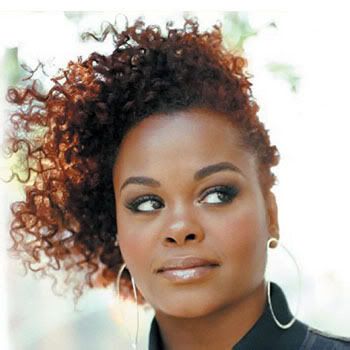
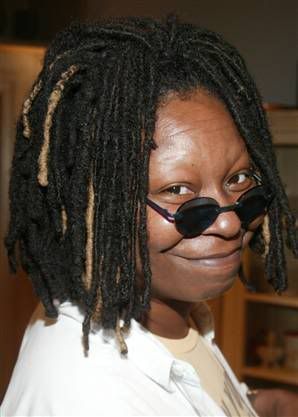
Many women of African descent all over the world have stopped relaxing, straightening, and playing with their hair, and have started embracing the natural look. There are many different reasons why people decided to go natural, whether it is because of hair damage from chemicals, scalp problems, illnesses, finances, hair loss, being tired of spending hours at the beauty salon/weaving lady's house....or simply curiosity. Or, if they're anything like me, others are just looking for something new and interesting to try when it comes to black hair.
No matter why we choose to go natural, it is a very convenient choice when it comes to maintenance, and it is definitely something that our wallets will thank us for.
The site Nappturality.com is a website dedicated solely and specifically to the woman who chooses to go "au natural". The site was created to help those who were simply looking for healthy, beautiful and painless hair solutions, and those who needed to see things that actually worked for others.
Nappturality.com provides photographs, Black natural hair articles and journals, links to websites, forums, other information and links about the care, maintenance and politics of natural hair.
The site is also a community where people discuss and upload their own photos, so if you're already wearing it natural, check the site out...and then come back and tell us about your experience!
Saturday, June 21, 2008
Black Beauty: Controlled By Black People or Not?
Black beauty is not controlled by black people. Black women are among the biggest spenders in the hair care industry, yet black people do not own much of the profits that come from the sale of African American haircare products.
Aaron Ranen does a wonderful job in this documentary highlighting the issues with the black hair care industry. After watching this, you will be informed, enlightened and perhaps motivated to send your black daughters to business school so that they can teach their black husbands how to own a piece of the 40 acres and a mule that African Americans are buying, building and creating for other people.
Black hair is a fundamental part of a black woman's beauty standard. Perhaps we should also try to understand the norms and origins of African American haircare choices so that we can be better informed in the future.
The documentary on African American hair care is below:
Aaron Ranen does a wonderful job in this documentary highlighting the issues with the black hair care industry. After watching this, you will be informed, enlightened and perhaps motivated to send your black daughters to business school so that they can teach their black husbands how to own a piece of the 40 acres and a mule that African Americans are buying, building and creating for other people.
Black hair is a fundamental part of a black woman's beauty standard. Perhaps we should also try to understand the norms and origins of African American haircare choices so that we can be better informed in the future.
The documentary on African American hair care is below:
Monday, June 16, 2008
Tips For Black Women: How to Avoid Breast Cancer
In June of 2006, my mother was diagnosed with Breast Cancer. Luckily, with the help of God, early detection, and very good doctors, my mother was able to take care of the situation before it became fatal. Throughout the experience, I became very interested in learning about this illness. It seemed so random and I would question how she got it at times, since nobody else in my family had the disease.
Cancer was something that I always heard about, but it seemed like it would never happen to us. This is the mentality of many women today, but the truth is cancer can happen to anybody. Breast Cancer in particular, is very prominent in African-American women.
A statistic has shown that 95 in every 100,000 African American women die of Breast Cancer each year. But also, the age of those infected is slowly getting younger. Now, 31 in every 100,000 African American women that are diagnosed with Breast Cancer are under the age of 40.
Here are 3 ways to prevent yourselves from becoming one of these numbers:
1. Learn about the disease. Just knowing something about Breast Cancer (such as symptoms) can help you satisfy a suspicion if you feel something is not right. There are tons of sites online to choose from. Look at Breastcancer.org, or read about the Susan G. Komen Foundation.
2. Learn about Breast Self Exams (BSE) and perform routine checks. There are numerous cases of cancer that have been detected early because of women performing self-checks and finding a lump in their breasts.(www.breastcancer.org/symptoms/testing/self_exam/index.jsp)
3. Attend all annual Mammograms. These appointments are necessary! A lot of mammograms have helped spot breast cancer in a lot of women. Talk to your doctors about when to start attending these, and where to go.
Breast Cancer is not something to brush off. This horrible disease has affected the lives of two of my cousins, an aunt, my mother's best friend, her friend's sister, my neighbor's sister, and four ladies who work with my mother.
I strongly believe that the cure is not too far away. Until then, all African American women should do what we can to protect ourselves.
Cancer was something that I always heard about, but it seemed like it would never happen to us. This is the mentality of many women today, but the truth is cancer can happen to anybody. Breast Cancer in particular, is very prominent in African-American women.
A statistic has shown that 95 in every 100,000 African American women die of Breast Cancer each year. But also, the age of those infected is slowly getting younger. Now, 31 in every 100,000 African American women that are diagnosed with Breast Cancer are under the age of 40.
Here are 3 ways to prevent yourselves from becoming one of these numbers:
1. Learn about the disease. Just knowing something about Breast Cancer (such as symptoms) can help you satisfy a suspicion if you feel something is not right. There are tons of sites online to choose from. Look at Breastcancer.org, or read about the Susan G. Komen Foundation.
2. Learn about Breast Self Exams (BSE) and perform routine checks. There are numerous cases of cancer that have been detected early because of women performing self-checks and finding a lump in their breasts.(www.breastcancer.org/symptoms/testing/self_exam/index.jsp)
3. Attend all annual Mammograms. These appointments are necessary! A lot of mammograms have helped spot breast cancer in a lot of women. Talk to your doctors about when to start attending these, and where to go.
Breast Cancer is not something to brush off. This horrible disease has affected the lives of two of my cousins, an aunt, my mother's best friend, her friend's sister, my neighbor's sister, and four ladies who work with my mother.
I strongly believe that the cure is not too far away. Until then, all African American women should do what we can to protect ourselves.
Wednesday, June 11, 2008
Some of the Many Black Hair Care Myths
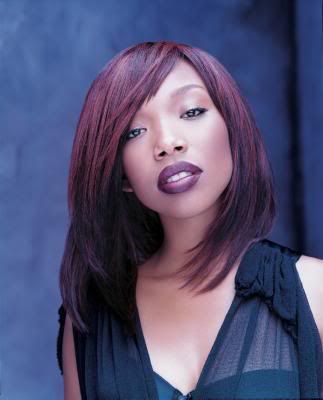
Over the years I have done a lot of hair and met a lot of people. With that has come some incredibly false information about how to take care of our black hair. I know the feeling, after a while we just don't know what to believe or what works. Well, here are at least 5 things you can be sure about:
Top 5 Black Hair Care Myths: True or False?
1. Relaxed hair will NOT grow.
- This is FALSE. Relaxing the hair does present a lot of chemicals that your hair may not be used to, but that doesn't necessarily hinder growth. Proper upkeep after a relaxer can maintain hair growth. By not applying too much heat (blow dryers, straighterners, etc.) and other chemicals closely after relaxing, you can prevent a lot of damage. Further help with relaxing hair will be featured in this blog soon.
2. Black Women should NOT wash their hair.
- This is definitely FALSE. Black women should NOT wash their hair EVERYDAY. Unlike our white friends, Black hair is much more dry and excessive washing can lead to excessive breakage. We should not wash it every day, but instead once every 3-7 days depending on your level of dryness. A mistake often made is not washing it for extended amounts of time, such as every 2 weeks, or even months while hair is braided or weaved. Instead, very dirty hair can slow down hair growth.
3. Herbs help hair growth.
- This is TRUE. Some herbs such as rosemary, chamomile and ginkgo are as good for the hair as they are for the body. Our friends at Kristen Lock detail the herbs myth on their site. (Check it out here: http://www.kristenlock.com/Herbal-Remedies-For-Black-Hair-Growth)
4. Leave-In-Conditioners DO NOT work.
- This is FALSE. Leave-In-Conditioners provide hydration and nutrients necessary for hair health. In fact, you can use leave-in-conditioners often without shampoo, especially after washing or quick rinses to maintain curls (for those of us with natural waves).
5. Massaging the scalp regularly stimulates hair growth.
- This is TRUE. Massaging the scalp regularly can stimulate hair folicles to grow. A daily 5 minute massage can help your hair grow (in addition to proper hair care), and make you feel better and calm while you're at it!
FEATURED PRODUCT: Motions Nourish Leave-In Conditioner.
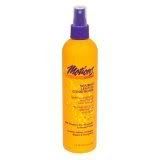
This spray is easy to use, and leaves hair managable, fresh and detangled. It is about $5 at hair supply stores.
There are many myths, do's, and don'ts to black hair care, and I will make sure to tell you what I know, what works, and what just doesn't! Some of it will come from my own personal experiences with doing hair, and others will come from questions and comments, so feel free to leave some!
Wednesday, January 9, 2008
Sisterlocks is Taking the World by Storm

A national movement is forming in black women's hair. Sisterlocks started in Boston and is spreading. The movement is formed around the idea that the person wearing her hair should have pride in it. There's nothing wrong with that.
"Hair is a big issue for black women," said Jacqueline Ashby, a Sisterlocks technician in Boston, MA. "They want to end being ashamed of it and start being nappy and beautiful. Some women are even afraid of the word nappy."
Started in 1993 by JoAnne Cornell, a professor at San Diego Stat University, Sisterlocks promotes both a hairstyle and healthy hair. Those who wash their hair can wear an go, roller-set, curl and style their hair without chemicals to change the texture.
The movement is called for in light of the controversy surrounding the way black women should and should not wear their hair, especially in a corporate setting. Even braids have been criticized as being unprofessional, and hair straightening has become the norm.
Wednesday, January 2, 2008
Black Women and Our Hair: Tips to Keep it Beautiful

Bobs and crops are bold and beautiful but if you want longer, healthier hair we’ve got some tips for you.
Cut the damage. If your ends are fried and tried, scraggly and haggard, disappearing and raggedy let them go. They may add to the length but long doesn’t always mean pretty. Visit your stylist and tell her to cut until it’s even and healthy.
Increase circulation. You can do this in two ways.
1) Get up off of the couch and get your heart pumping. Exercise, it just keeps coming back doesn’t it.
2) Give yourself a daily scalp massage using your fingertips.
You are what you eat. What goes in helps what comes out. Foods rich in vitamins A, B, C and E are essential for growing healthy hair and iron and zinc are proven to help your hair grow its fastest.
Keep it clean, especially if you use a lot of products. Remember, the days of petroleum and mineral oil based hair grease and conditioners have retired. Product build-up can clog follicles and prevent your hair from growing. Be sure to shampoo often (talk to your stylist about how often is often enough for you) and give your hairbrushes and combs a weekly cleansing too so that you’re not re-brushing in old dirt and oil.
Be kind. Long hair is old hair. Swap abrasive products for gentler ones formulated for your hair type. Add a deep treatment or hair mask to your regimen and try to stay away from heat-styling appliances.
Get regular trims. You want your hair to stay undamaged and split-end free. Otherwise you’ll end up back where you started.
Subscribe to:
Posts (Atom)













